Achilles Tendon Treatments

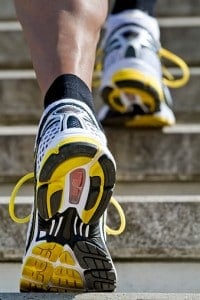
Achilles tendon treatments Pittsburgh
If you have pain after walking or working out in the back of your heel, you may have Achilles Tendinitis. Achilles tendon treatments vary from rest to surgery, we will go through them all.
The Achilles tendon is the strongest tendon in the body. As such, it takes on a lot of stress. Overusing this tendon is what causes wear and tear and eventually leads to Achilles tendon injury or inflammation- Achilles Tendinitis. where is the achilles heel located
Digital Xray of Foot
At Beaver Valley Foot Clinic the first thing we do to treat Achilles tendonitis is determine if it is irritated vs really torn. Some injuries actually require surgery, so it is important to see where you injury falls before you get an Achilles Tendon rupture. The good news is that very few people actually go on to need achilles surgery.
Achilles tendon treatments (achillidynia)
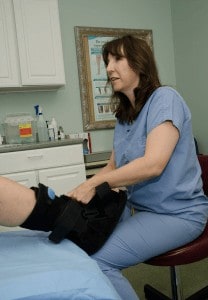
We have some state-of-the-art treatments available you can not find for 150 miles!
Quick clinics are fine if you want to receive an Xray and an Ibuprofen. However, neither of these address the issue. Achilles Tendonitis is a soft tissue injury and an Xray wont show the whole story.
If there is suspicion of an Achilles tear or achilles tendon rupture, We have the cabability to do an immediate ultrasound that can assess the extent of soft tissue injuries.
Immobilization is required for tissue healing. At Beaver Valley Foot Clinic all of your needs are considered when choosing the best treatment option-your age, your job, your activity level, your pain level…there are always options.
If your Achilles Tendinitis has become chronic-that is been present 6 months or more – and has been resistant to other treatments, there is still hope!
ESWT is available and helps heal even long term achilles tendonitis.
FDA approved to treat Chronic Plantar Fasciitis, it has long been known that these two structures are very similar in both structure and function. Although an off abel use, we have had great success treating the achilles tendon with a single 20 minute ESWT procedure. The key is using a high intensity ultrasound guided machine. This allows us to jump start your healing process in one treatment.
Call today to start your “heel healing” process! To schedule an appointment call 878-313-3338
Click Here to E-mail Dr. Christina Teimouri
OPERATION HOURS:
Emergency and same day appointments available even for new patients or new problems!
Before school and before work appointments and emergency weekend appts
Achilles tendon treatments Healing Credentials…
- Specializing in heel pain treatments since 2002, general podiatry since 1995
- Beaver, Ambridge, Coraopolis and Cranberry foot care locations
- American Board of Foot and Ankle Surgeons ( ABFAS) Certified
- Surgical and Nonsurgical procedures available
- Caring competent staff who get to love our patients!
Achilles Heel pain causes and treatments:
Causes
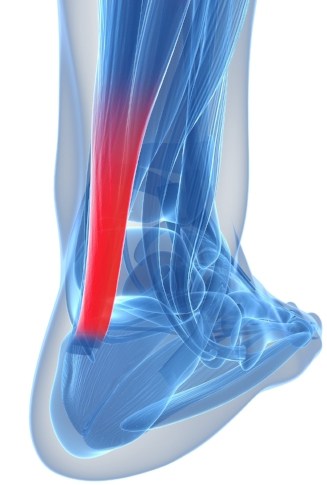
Achilles tendinitis can be caused in several different ways. Some you can control, and others you can’t. See your Podiatrist at the first sign of injury to prevent worsening of symptoms and making some changes that can remove the causes you can control.
Noninsertional Achilles tendinitis
Younger active people, runners, marathoners often suffer from Noninsertional Achilles tendinitis. This is often characterized by a soft tissue “lump” on the back of the heel, several centimeters proximal to (above) the heel bone (calcaneous). The fibers in the substance, or middle of the tendon can get small micro tears from overuse, as they start to tear and break down they swell and thicken, forming that oh so familiar painful lump. Pain can range from sore achilles tendon in the morning to a full rupture of the tendon.
Insertional Achilles tendinitis
The Achilles tendon begins below the calf muscle and runs down the back of the lower leg. Pain where the lower portion of the tendon inserts into the calcaneous bone is called Insertional Achilles tendinitis which is not necessarily activity related. It can be found in sedentary and overweight persons, often with biomechanical or shoe related factors.
Controllable causes of Achilles tendonitis include:
- Fluoroquinolone antibiotic use like Cipro,Levaquin, gemifloxacin, Baxdela, Factive, Avelox
- Steroid use
- Improper warm up prior to exercise
- Running in worn out or the wrong shoes for the activity
- Running on uneven ground
- Improper training intensity increments (doing too much too soon)
- Too many squats with too much weight
- Running too many Pittsburgh hills, or too great an incline on the treadmill
- Tight calf muscles
- Shoes that rub on the back of the heel
Noncontrollable causes of Achilles tendonitis include:
- Haglunds deformity (pump bump)
- Bony spurs or calcifications where the tendon joins the bone
- Fallen arches or flat feet
- Limb length discrepency
- Sudden intense physical activity or trauma
- knee misalignment
Achilles tendon treatments

Our goal is to get you comfortable and back to your normal activities ASAP!
The initial treatment is geared toward reducing swelling, which will decrease the pain. Although pro athletes and couch potatoes may choose different treatments, everyone wants it to stop hurting! Insertional Achilles tendinitis is also treated much differently than noninsertional Achilles tendinitis.
Your Podiatrist will suggest a combination of different Achilles tendon treatments therapies based on your goals and abilities and physical condition.
Achilles tendonitis treatments – Nonsurgical Treatment
ESWT for Achilles
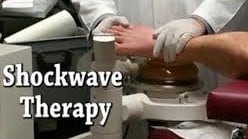
Paratendonitis definition, achilles paratenon
Achilles tendon treatments – Surgery
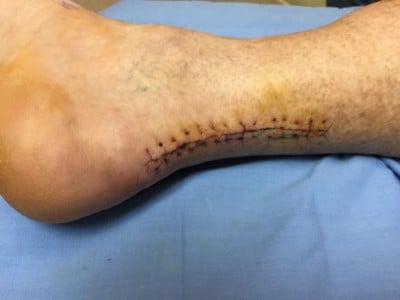
Most often used for primary repair of a ruptured tendon.
The most common procedure is gastrocnemius recession. This involves lengthening one of the two muscles that make up the calf, to give the ankle a wider range of motion.
Achilles tendon treatments – Extracorporeal Shockwave Therapy?
- Shockwave is the Gold Standard non-invasive treatment for chronic achilles tendonitis and many other chronic joint injuries. ESWT delivers many micro bursts of high intensity ultrasound energy to the damaged tendons crossing the ankle joint—it is these tendons which cause symptoms in almost all patients. It’s interesting that this ultrasound is exactly the same type used by ultrasound machines to image babies and abdominal organ, but the ultrasound is not the treatment. The treatment is guided by the image formed on the ultrasound. This might seem confusing, but ESWT uses electromagnetic technology to generate shock waves. Clinically, the inflamed scar tissue is broken down by the shock waves, allowing these tendons to heal properly. Soon the symptoms go away. We typically recommend that our Plantar fasciitis Mt Lebanon patients opt for ESWT after exhausting common options such as NSAIDS (ibuprofen) and rest.
ESWT Achilles tendinitis research- full articles are linked to title
Am J Sports Med. 2006 May;34(5):733-40.
High-energy extracorporeal shock wave therapy as a treatment for insertional Achilles tendinopathy.
Furia JP1.
Author information
Abstract
Case control study; Level of evidence, 3.
METHODS:
Thirty-five patients with chronic insertional Achilles tendinopathy were treated with 1 dose of high-energy extracorporeal shock wave therapy (ESWT group; 3000 shocks; 0.21 mJ/mm2; total energy flux density, 604 mJ/mm2), and 33 were treated with nonoperative therapy (control group). All extracorporeal shock wave therapy procedures were performed using a local anesthesia field block (LA subgroup, 12 patients) or a nonlocal anesthesia (NLA subgroup, 23 patients). Evaluation was by visual analog score and by Roles and Maudsley score.
Achilles tendon treatments in Pittsburgh -RESULTS:
One month, 3 months, and 12 months after treatment, the mean visual analog score for the control and ESWT groups were 8.2 and 4.2 (P < .001), 7.2 and 2.9 (P < .001), and 7.0 and 2.8 (P < .001), respectively. Twelve months after treatment, the number of patients with successful Roles and Maudsley scores was statistically greater in the ESWT group compared with the control group (P > .0002), with 83% of ESWT group patients having a successful result, and the mean improvement in visual analog score for the LA subgroup was significantly less than that in the NLA subgroup (F = 16.77 vs F = 53.95, P < .001). The percentage of patients with successful Roles and Maudsley scores did not differ among the LA and NLA subgroups.
Achilles tendon treatments CONCLUSION:
Extracorporeal shock wave therapy is an effective treatment for chronic insertional Achilles tendinopathy. Local field block anesthesia may decrease the effectiveness of this procedure.
Achilles tendon treatments Risk Factors
The predominant cause of Achilles tendonitis is the overstretching of the Achilles tendon. This can happen in active individuals who participate in activities that put a lot of stress on the tendon, such as running, hurdles, gymnastics, soccer, basketball, tennis, lacrosse and others. Additionally, those who suddenly take up a new (or dramatically increase an existing) exercise regimen are at risk of developing Achilles tendonitis.
Another potential trigger for the development of Achilles tendonitis is failing to warm up the calf muscles before exercising. If the calf muscles are tight, they are exposed to higher levels of tension. That additional pressure is then transferred to the Achilles tendon. When training in cold weather you will have to take special care to stretch well. The cold temperatures can stiffen and shorten the muscles and tendons.
Using ill-fitting or worn-out workout shoes is another factor that can contribute to Achilles tendonitis. Make sure that when working out you are using sneakers that are meant to be used for aerobic exercise, that they fit well and are not worn out.
Improper mechanics
Improper mechanics can add strain to the Achilles tendon. Sometimes a poor running style can contribute to imbalances and less-than-ideal muscle mechanics. Correcting your running style may be as easy as talking to a physical trainer. There are also physical conditions that can cause improper twisting or an imbalance in the forces placed on the legs. These conditions induce:
- foot misalignment,
- flat feet and
- discrepancy in the length of the leg
Bony outgrowths on the back of the ankle can also cause Achilles tendonitis to develop, The most common culprits of this mallity are either a bone spur from arthritis or a case of Haglund’s deformity resulting from wearing ill-fitting shoes. The bony growth has the potential to rub on the Achilles tendon, causing inflammation and pain.
Some chronic medical conditions
Some chronic medical conditions have also been linked to a higher risk for developing Achilles tendonitis. If you have any of the following health conditions, they may be putting additional pressure on the Achilles tendon:
- high blood pressure,
- obesity or
- psoriasis.
In rare cases, taking fluoroquinolones (a class of antibiotic drugs) has been associated with Achilles tendonitis and rupture (more on that below).
Achilles tendonitis can present with or without pain, which, can unfortunately make some cases difficult to diagnose. If left untreated tendonitis can turn into Achilles tendonosis. Achilles tendon treatments are necessary for faster healing.
When is surgery considered for Achilles tendonitis?
There are multiple factors when you need to consider a surgery for Achilles tendonitis, here are some of them:
- When medications don’t work:
If non-surgical treatments such as rest, orthotics, physical therapy, and medications aren’t effective or haven’t improved your condition for a long time then these are some good signs to get a surgery.
- Severe and Persistent Pain
If the pain if too much for you to handle, feels much more sharp when doing certain activities especially the important ones, or is persistent throughout the day even when you are resting, then you seriously need time think about getting the surgery.
- Chronic Symptoms
The symptoms are chronic and have been present for months, no matter what treatment you got they have barely disappeared and there’s no progress in healing.
Can Achilles tendonitis become a chronic condition?
Yes, it’s possible for Achilles tendonitis to turn into a chronic condition, especially if it lasts for more than 3 months. When this happens the condition is known as chronic Achilles tendonitis, which can result into some other problems like:
- Repetitive stress: Even when you do your daily activities, the pain will disturb you and will make those activities much more difficult than they are supposed to be.
- Scar Tissue formation: Chronic Achilles tendonitis leads scar tissue formation, a condition which weakens the tendon and perpetuates the cycle of pain and dysfunction.
Is it safe to continue running or participating in sports with Achilles tendonitis?
Taking part in sports and running is nit generally recommended, if you still continue then there are chances of following conditions:
- Increased damage, due to repetitive pressure on the damaged area
- Delayed healing, because of continuous injuries
- Risk of rupture, which will need surgery
- Chronic condition development
